Over the Years
Home > Over the Years > Over the Fiscal Years (2010 APR - 2020 MAR) > Ten Medical Professionals from Korea Invited for Training
Ten Medical Professionals from Korea Invited for Training
HICARE invited 10 medical professionals engaged in radiation emergency medicine at the Korea Institute of Radiation & Medical Sciences (KIRAMS) and hospitals designated by National Radiation Emergency Medical Center for training on the treatment of radiation-exposed.
List of trainees:
| Name | Affiliation | Title |
| Ko Yong-woo | Cheju Halla General Hospital | Medical engineer |
| Son Seung-hyun | Kyungpook National University Hospital | Doctor |
| Son Min-ho | Uljin-gun Medical Center | Office staff |
| Jang Yi-sun | Chungbuk National University Hospital | Medical engineer |
| Song Ji-yeon | The Armed Forces Hampyeong Hospital | Nurse |
| Choi Seong-woo | Armed Forces Busan Hospital | Doctor |
| Choi Myeong-ae | Korea Inst. Of Radiological & Medical Science (KIRAMS) | Nurse |
| Jong Ae-jin | Korea Inst. Of Radiological & Medical Science (KIRAMS) | Nurse |
| Jang Won-il | Korea Inst. Of Radiological & Medical Science (KIRAMS) | Doctor |
| Yoon Seok-won | Korea Inst. Of Radiological & Medical Science (KIRAMS) | Researcher |
Period of training:
September 14 to 17, 2015
Training Organization (in order of visits):
Hiroshima University Hospital (Advanced Emergency and Critical Care Center)
Hiroshima Red Cross Hospital & Atomic-bomb Survivors Hospital
Hiroshima Atomic Bomb Casualty Council.
Hiroshima University (Research Institute for Radiation Biology and Medicine)
Radiation Effects Research Foundation
Kurakake Nozomi-en (Nursing Home for A-bomb survivors)
Hiroshima Peace Memorial Museum, etc.
Training Course:
Diagnosis of radiation disorders
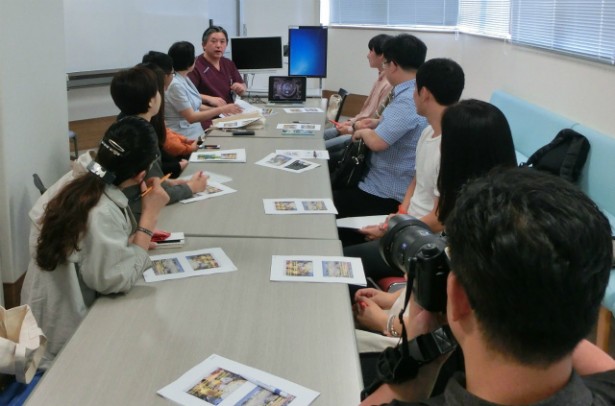
With Associate Professor Nobuyuki Hirohashi (left back) of Advanced Emergency and Critical Care Center, Hiroshima University Hospital
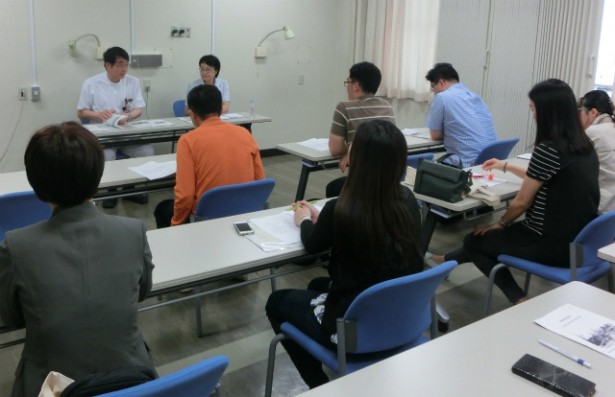
With Dr. Shunichi Kaseda(left back), Vice President of Hiroshima Red Cross Hospital & Atomic-bomb Survivors Hospital
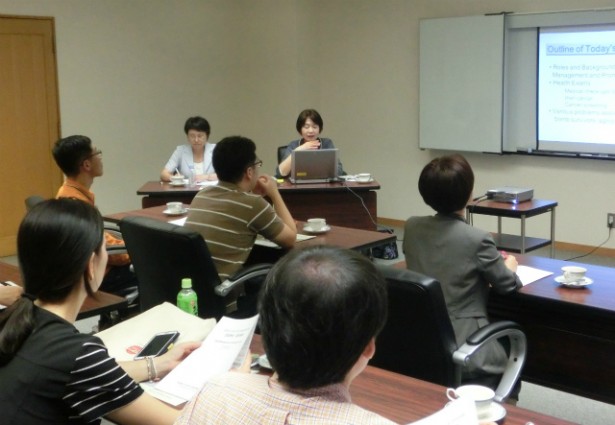
With Dr. Saeko Fujiwara(far back right), Director of Health Management & Promotion Center, Hiroshima Atomic Bomb Casualty Council
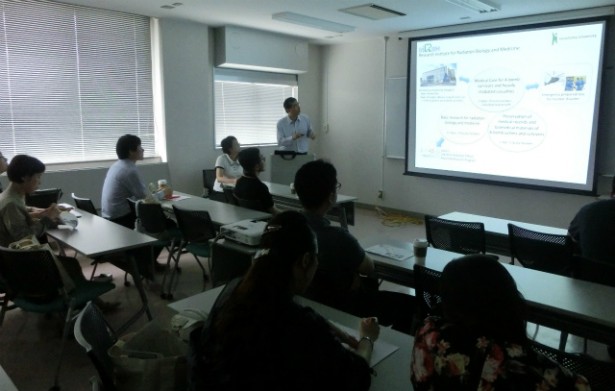
With Dr. Toshiya Inaba(far back), Director of Hiroshima University Research Institute for Radiation Biology and Medicine
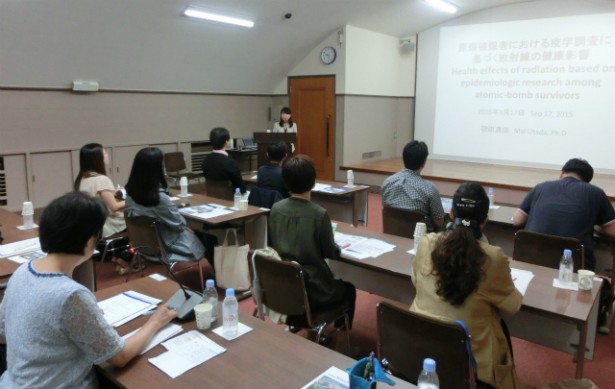
With Dr. Utada (center), Researcher of the Departments of Epidemiology
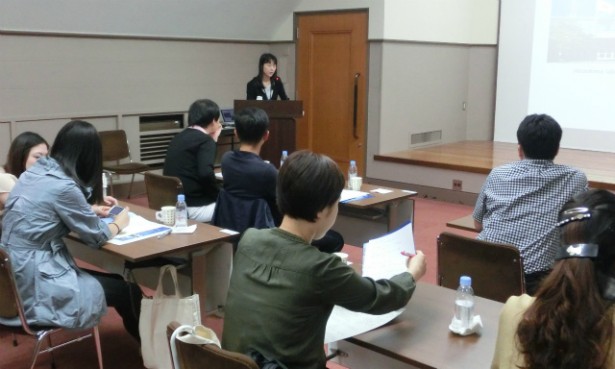
With Dr.Tatsukawa (center), Researcher the Department of Clinical Studies, Radiation Effects Research Foundation
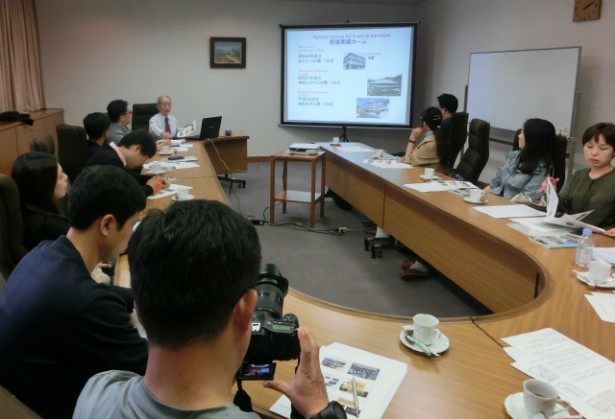
With Dr. Nanao Kamada (left back), Board Chairman of Hiroshima A-Bomb Survivors Relief Foundation
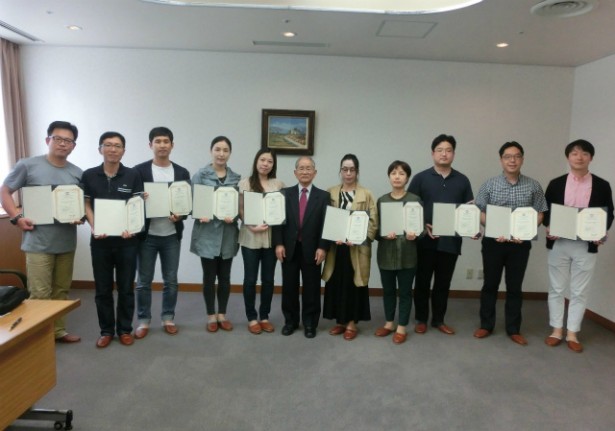
Received the certificate of completion at Kurakake Nozomi-en - nursing home
Feed back:
- It was a graphic experience for me to understand the damage done by the bomb and to join inspections. I fully realized the meaning of the proverb, “Seeing is believing.”
Nuclear bombings must not happen again. Despite the serious damage, people in Hiroshima worked out together for recovery. I was astonished by the people even doing research on it and managing such programs to make it widely known among the medical professionals around the world.
- I will impart the knowledge I learned through the training to staff members and my organization. In the case of executing medical care services for a patient related to radiation, I realize now that we should be more sensitive when managing patients including follow-up care.
I also understood the importance of maintaining networks and sharing data between organizations.
- I could learn in detail about the situation after the bombing in Hiroshima. I have had unclear concerns relating to Fukushima, and now I can believe that people will be able to reconstruct the city. I will transfer the knowledge I learned through the training to my co-workers and people around me. At the same time, I will make use of myself in responding to disasters which may happen in Korea someday.
- The descriptions based on actual examples and detailed explanation on accumulated knowledge and experience were different from what we learned at home, and that was good for me. As I live in an area with nuclear facilities, it was beneficial for me to know more about the importance of lower radiation doses.




